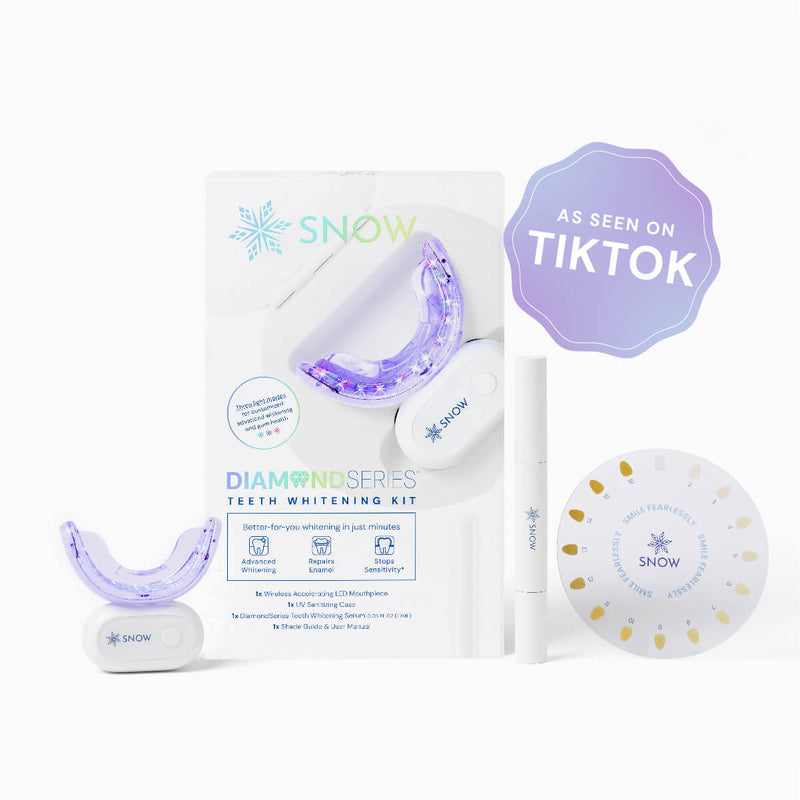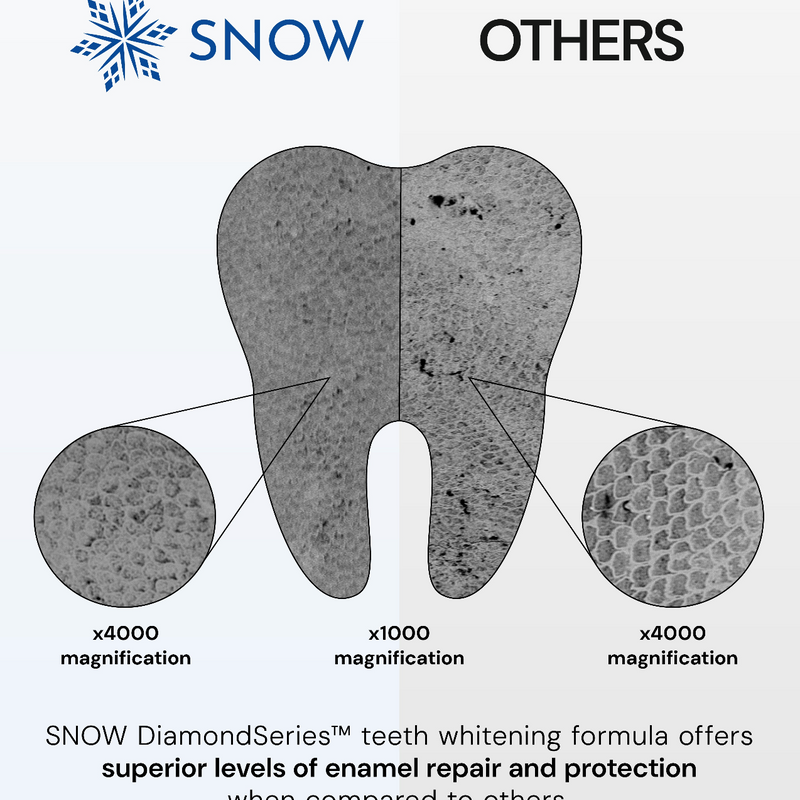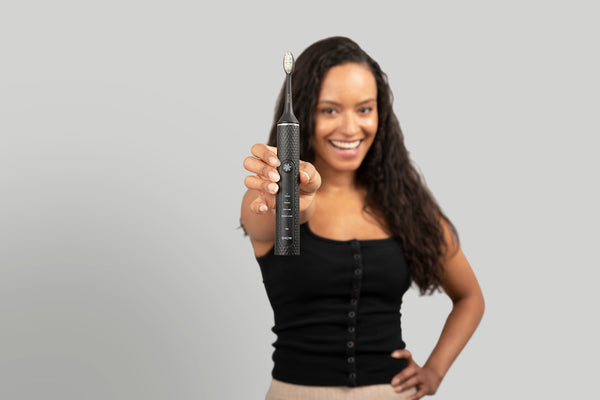The relationship between bacteria and your toothbrush is something we, at SNOW, can shed some much-needed light on.
Can your toothbrush make you sick? Yes, your toothbrush can harbor germs that may potentially make you sick. But fear not, SNOW is here to enlighten you on how to mitigate this risk and maintain optimal dental health.
In this article, we'll delve into the science behind toothbrush contamination and provide practical tips on how to keep your toothbrush clean.
From debunking myths to offering expert advice on proper toothbrush handling, we've got you covered.
Stay tuned as we explore everything you need to know about safeguarding yourself against the hidden dangers lurking within the bristles of your toothbrush.
What this article covers:- Do Germs Stay on Your Toothbrush?
- Could Your Toothbrush Be Making You Sick?
- Should You Disinfect Your Toothbrush After You've Been Sick?
- How to Keep Your Toothbrush Clean
- Do Toothbrush Sanitizers Really Work?
- How Should You Store Your Toothbrush?
- When Is It Time to Replace Your Toothbrush Heads?
Do Germs Stay on Your Toothbrush?
While it's true that our mouths host a plethora of bacteria, studies by the NCBI suggest that toothbrushes can indeed harbor these germs, including potentially harmful ones like E. coli and staphylococci.

According to NCBI's research, microbial contamination of toothbrushes is a common occurrence, especially in shared spaces or environments with poor hygiene practices.
However, before you panic, rest assured that proper hygiene practices can minimize the risk of illness.
Can Your Toothbrush Make Others Sick?
Yes, your toothbrush could potentially make others sick if it becomes contaminated with harmful bacteria. It's essential to store your toothbrush properly and avoid sharing it with others to prevent the spread of germs.
Our research indicates that proper storage and regular replacement of toothbrushes are key components of maintaining oral hygiene and preventing the transmission of infectious agents.
Could Your Toothbrush Be Making You Sick?
The notion of your toothbrush being a breeding ground for bacteria might sound unsettling, but fear not.
While studies have shown that toothbrushes can harbor germs, the likelihood of these pathogens causing illness is relatively low.
Our bodies are equipped with remarkable defense mechanisms that help fend off potential threats, including those from our toothbrushes.
The Role Of Hygiene In Toothbrush Safety
Ensuring proper hygiene practices can significantly reduce the risk of illness associated with toothbrush use.
Regularly rinsing your toothbrush with water after each use and allowing it to air dry can help minimize bacterial growth.
Additionally, storing your toothbrush in an upright position and away from other bathroom surfaces can further prevent contamination. For added protection, consider replacing your toothbrush every three to four months or sooner if bristles appear frayed or worn.
By incorporating these simple habits into your dental routine, you can maintain a clean and healthy toothbrush for optimal oral hygiene.
Should You Disinfect Your Toothbrush After You've Been Sick?
After battling a bout of illness, you might be tempted to give your toothbrush a thorough disinfection. While this extra precaution can't hurt, it's not always necessary.
Our research has found that replacing your toothbrush after recovering from an illness is more effective in preventing the reintroduction of harmful bacteria.

The Role Of Toothbrush Replacement
In most cases, it's advisable to replace your toothbrush after being sick to minimize the risk of reinfection.
Our bodies can shed viruses and bacteria even after symptoms subside, potentially contaminating the toothbrush.
However, if you're using an electric toothbrush with removable heads, simply replacing the head should suffice. This allows for a cost-effective and eco-friendly solution while ensuring proper oral hygiene.
How to Keep Your Toothbrush Clean
According to WikiHow, keeping your toothbrush clean is essential for maintaining good oral hygiene. Here's how we recommend keeping your toothbrush pristine:
- Rinse after use: After brushing, thoroughly rinse your toothbrush under running water to remove any remaining toothpaste and debris. This simple step helps prevent the buildup of bacteria on the bristles.
- Store properly: Store your toothbrush upright in a holder to allow it to air dry between uses. Avoid covering it with a cap or storing it in a closed container, as this can promote bacterial growth.
- Replace regularly: Replace your toothbrush or toothbrush head every three to four months, or sooner if the bristles become frayed. This ensures that you're using an effective tool for cleaning your teeth and reduces the risk of bacterial contamination.
- Clean electric toothbrush heads: If you use an electric toothbrush, follow the manufacturer's instructions for cleaning the brush heads. Some models may be detachable and can be cleaned separately from the handle.
By following these simple steps, you can maintain a clean toothbrush and support your overall oral health.
Do Toothbrush Sanitizers Really Work?
At SNOW, we acknowledge the ongoing debate surrounding the efficacy of toothbrush sanitizers. While these devices claim to eliminate germs, their effectiveness varies.
Toothbrush sanitizers can indeed reduce bacterial contamination.
However, it's essential to note that proper cleaning and storage practices play a crucial role in maintaining oral hygiene.
Our research highlights that while toothbrush sanitizers may help minimize bacterial growth, they should not replace routine hygiene habits.
Regularly cleaning your toothbrush and storing it properly are equally important factors in preventing bacterial buildup.
While toothbrush sanitizers may offer additional protection against germs, they should complement, not replace, proper cleaning and storage practices for optimal oral hygiene.
How Should You Store Your Toothbrush?
At SNOW, we prioritize proper toothbrush storage to maintain optimal oral hygiene. After each use, it's essential to rinse your toothbrush thoroughly under running water to remove any lingering toothpaste or debris. This helps prevent the buildup of bacteria on the bristles.
Once rinsed, store your toothbrush upright in a well-ventilated area. Avoid covering it or storing it in closed containers, as this can trap moisture and promote bacterial growth. Allowing your toothbrush to air dry between uses is crucial in preventing the proliferation of germs.
Remember to replace your toothbrush every three to four months, or sooner if the bristles become frayed or worn, to ensure effective cleaning.
By following these storage practices, you can maintain a clean toothbrush and promote better oral health. It's also essential to know how to clean electric toothbrushes properly, as their design can be slightly more complex than standard ones.
Our research has indicated that electric toothbrushes work far better when they're cleaned regularly.
When Is It Time to Replace Your Toothbrush Heads?
At SNOW, we pride ourselves on providing expert guidance for your at-home teeth whitening routine. Knowing when to replace your toothbrush heads is crucial for maintaining optimal oral hygiene and ensuring effective whitening results.
Our LED Teeth Whitening Electric Toothbrush and Advanced Whitening Electric Toothbrush are designed to deliver superior whitening performance. However, to maximize their effectiveness, it's essential to purchase replacement brush heads regularly.
We recommend replacing your toothbrush heads every three to four months, or sooner if the bristles show signs of wear and tear. Over time, bristles can become frayed or flattened, reducing their cleaning effectiveness.
Additionally, if you've been sick, it's advisable to replace your toothbrush head to prevent the reintroduction of harmful bacteria into your mouth. This extra precaution helps maintain a clean and hygienic brushing experience.
By following our recommendations for replacing toothbrush heads, you can ensure that your SNOW electric toothbrush continues to deliver exceptional whitening results and supports your overall oral health.
Remember, it's particularly important to change your toothbrush after you are sick to prevent the spread of germs.
Conclusion
Amidst the ongoing debate surrounding toothbrush sanitizers, it's evident that ensuring proper toothbrush hygiene is crucial for oral health. While these devices can reduce bacterial contamination, regular cleaning and storage methods are equally important.
Storing toothbrushes in a clean, dry place and replacing brush heads regularly are essential practices.
At SNOW, we prioritize dental hygiene, offering advanced electric toothbrushes designed to maintain cleanliness and promote oral health. When it comes to achieving a brighter smile, proper teeth whitening techniques are key.
Explore our range of teeth whitening products to complement your dental care routine and enhance your smile's brilliance. Elevate your dental care regimen with SNOW's innovative solutions.
If you want to learn more, why not check out this post:
- Cleaning Toothbrush with Vinegar
- Are Electric Toothbrushes Better?
- How to Use Electric Toothbrush
- Benefits of Electric Toothbrush
- How Often to Replace Electric Toothbrush
- Can Electric Toothbrushes Damage Teeth?
- Are Electric Toothbrushes Worth It?
- Mold in Electric Toothbrush
- How Do Electric Toothbrushes Work?
- Vibrating Toothbrush vs. Rotating
- Electric Toothbrush or Manual
- Soft or Hard Toothbrush
- Bamboo Toothbrush Benefits
- Tongue Scraper vs. Toothbrush
- Soft vs. Extra Soft Toothbrush
























